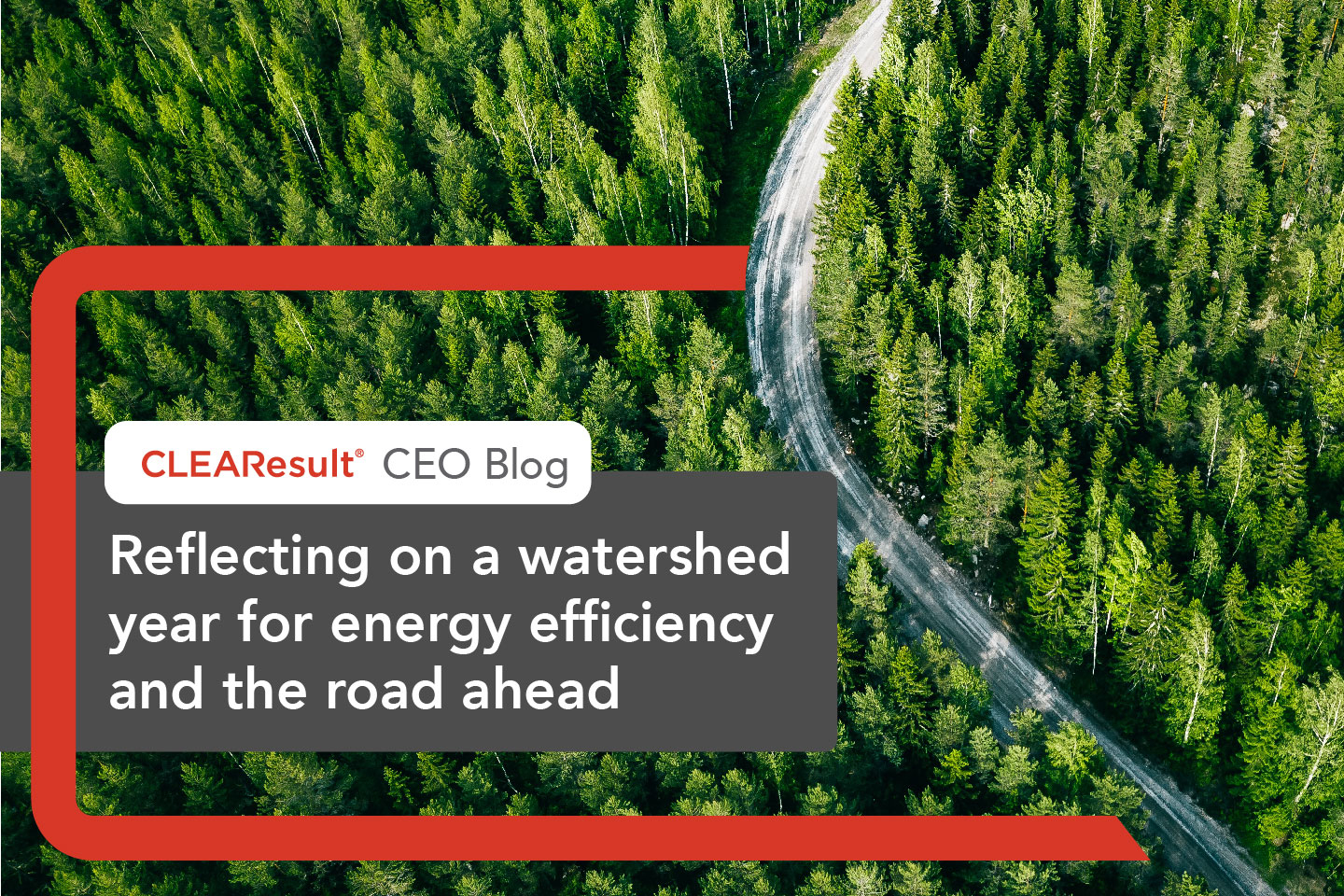Reflecting on a watershed year for energy efficiency and the road ahead

First things first, Happy New Year everyone!
As I look in the rearview mirror, 2023 emerges as a pivotal year for our business and the broader energy efficiency landscape. Sustainability is no longer a yes or a no – in other words, it’s no longer a question of whether it’s a worthy investment. Instead, it’s now a matter of how fast (and how far) to go. We still have a lot of work to do, but that positive momentum is a promising sign that we’re in for an even brighter year ahead. As we kick off the new year, I want to reflect on 2023 and explore the trends that will continue to shape the industry in 2024 and beyond.
2023: A breakout year for the sustainability movement
In addition to the strong double-digit growth we experienced through utilities running their energy efficiency programs, for the first time we saw multiple states and municipalities actively developing and implementing their own programs, with simultaneous engagement from utilities and the federal government through landmark legislation like the Inflation Reduction Act (IRA). We also saw record energy savings and utility bill reductions for millions of customers, driven by the continued proliferation of demand response programs, milestone electric vehicle (EV) usage and more. Collectively, these initiatives are helping to drive shifts toward widespread adoption of more sustainable practices.
Energy policy may have taken center stage in 2023, but even before we saw the full force of state and government-funded programs materialize, the industry saw significant positive momentum – our own business saw record growth – highlighting the strength and promise of the energy efficiency sector and setting the stage for accelerated progress in the coming months.
2024 will be the IRA’s time to shine
As I mentioned in a previous post, the IRA will be a marathon, not a sprint. We’re already seeing state energy offices start to mobilize and figure out how to translate the IRA and corresponding guidance from the DOE into a contractable framework. Goals will translate into concrete action this year as federal funding starts to flow. We’re all navigating new territory, and every state has its own set of nuances. State energy offices – many of which have limited administrative capacity – will need substantial resources and support to ensure that every dollar is allocated effectively and everyone can take advantage of the IRA’s home energy efficiency and electrification rebates.
Working better together
The pace of sustainability efforts varies across states, but the importance of strong collaboration can’t be overstated. Effectively implementing and tailoring programs to local needs will hinge upon strong partnerships between federal agencies, state governments and local communities. Imagine the chaos if, amidst the national rush to participate in IRA programs, these groups fail to communicate effectively. Proactive collaboration will help prevent wasted IRA funding and ensure it reaches those who need it most: income-eligible populations.
Increasing heat pump adoption
All signs point to heat pumps eventually becoming a major factor in the race toward decarbonization. Significant advancements in technology and federal tax credit incentives are driving a recent surge in demand, and public utility commissions (PUCs) are moving full speed ahead to implement heat pump programs.
Heat pumps move heat instead of generating it, so they are much more energy efficient than traditional systems like furnaces – even in cold climates – and new and improved ductless systems can be installed with minimal effort. A recent study in Joule measured heat pump performance in low temperatures across three continents, finding that heat pump efficiency was significantly higher than fossil heating and electric-resistance alternatives, even well below 0°C:

Average Coefficient of Performance
New and existing incentive programs gaining traction in both the U.S. and Canada are also driving the positive momentum. Heat pumps power around 15% of U.S. homes and 7% of Canadian homes today, leaving a huge amount of untapped potential.
It’s impossible to overstate the potential impact of heat pumps, but the reality is: it’s a big decision for customers. Successful implementation will depend on addressing barriers to entry as the market grows. That’s where strong customer education comes in. As we continue to design and deliver heat pump programs, we need to meet customers where they are to gain influence and increase market penetration.
Promising shifts in consumer mindset
As the benefits of energy efficiency become increasingly apparent, more individuals and businesses are proactively seeking greener solutions, ultimately driving market demand and greater investments in our sector. We also anticipate substantial technological innovations to play a pivotal role in the energy efficiency landscape in 2024, which I look forward to covering in future blogs.
The bottom line is, we’re going to see a record amount of money being put into sustainability programs over the next 3-5 years, and I’m excited by the real opportunity to make a meaningful impact on the planet (which we will all benefit from). With all hands on deck, 2024 promises to be another game-changing year.
Thanks for reading!